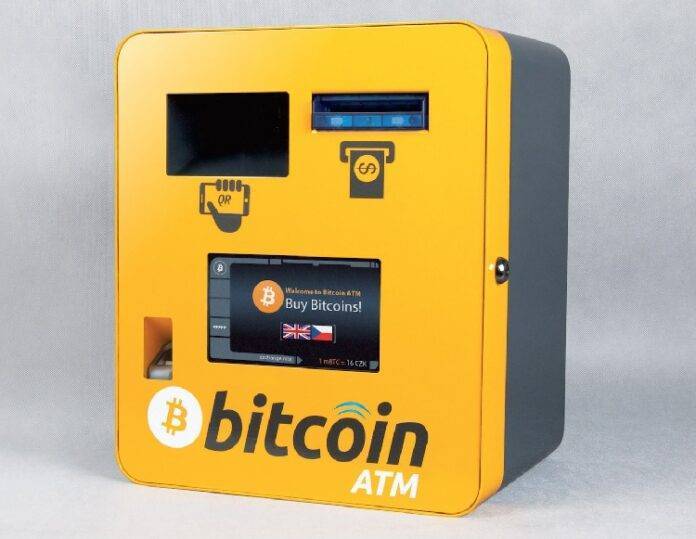Almost all the businesses and industries try to make the best out of every new way to increase revenue. The same is the case with the ATM industry, Bitcoin ATMs seem to be a practical option for the future.
A lot of discussions have been around about Bitcoin and Bitcoin ATMs. After going through the financial setback in the ATM industry due to the coronavirus pandemic, this may be a new revenue source to consider. Here we are discussing in detail all the major issues that you should be aware of before you step forward to invest in the Bitcoin ATMs Marketplace.
How long have Bitcoin ATMs been around?
The company is still undergoing a developmental procedure as we find out that its first machines were introduced approximately seven or eight years ago, according to the Seattle Times.
How many Bitcoin ATMs are there?
There are approximately 7,000 Bitcoin ATMs worldwide, according to Bitcoin.com. However, by observing the analysts’ predictions we can say that Bitcoin ATMs will pass the 10,000-machine threshold most likely by the end of 2020.
Are customers interested in using Bitcoin ATMs?
Coindesk.com reported that it is a surprising thing to notice that last year in April when the coronavirus pandemic was at its peak, some Bitcoin ATM operators saw increased activity in transactions, while most people were restricted to be inside. According to Forbes, a visible rush was noticed by Google and Bitcoin-related searches indicating that ATM operators, as well as the public, were constantly researching the use and feasibility of Bitcoin ATMs.
Difference between Bitcoin ATMs and cash ATMs
It is right to say that Bitcoin ATMs are not the same as traditional ATMs, but their basic operations are the same as we find in a traditional ATM. Bitcoin ATMs facilitate its users to use cash to buy Bitcoins and also allow them to trade bitcoin today, receive cash or insert cash and have it sent to someone’s Bitcoin wallet.
What are the benefits of owning a Bitcoin ATM fleet?
Andrew Barnard, CEO and founder of Bitstop, a Miami-based Bitcoin technology company expressed his verdict about Bitcoin ATMs. He says that the Bitcoin ATMs are the counterpart of traditional ATMs because traditional ATMs work as cash dispensers and Bitcoin ATMs are specialized cash acceptors.
Barnard said in an interview with ATM Marketplace that it is very beneficial for an operator who can scale and build up a valuable business that would ultimately complement a traditional ATM operation and make it multiple portfolios for them by owning and operating Bitcoin ATMs. It will demand more capital investment and it is difficult to learn too, but operators are the main controllers of not just the Bitcoin ATMs, but of the merchant relationships and data.
Do Bitcoin ATMs give operators a higher commission than regular ATMs?
Bitcoin ATMs as compared to traditional ATMs are also a star forward in terms of commission, actually, it is much higher. According to a report by Forbes, the average industry fee ranges between 10 and 15% for operators, and the average volume per machine can be $12,500 or higher per machine. So in this way, the average Bitcoin ATM may actually pay for itself in six to 14 months, depending on its location.
Is It Possible to use a traditional ATM For Bitcoin ATM?
It is not that simple. But just for a try, the traditional ATM operators may want to find a company that has complete software integration with Bitcoin debit card ATMs. There are some companies that have done so and developed software to retrofit ATMs. This offers the facilities to sell cryptocurrencies via a customer’s debit card without having to upgrade the machine’s hardware. Although this effort doesn’t charge an ATM machine into a dedicated Bitcoin ATM, in the long run, it will help operators to determine if there is a demand for cryptocurrency in specific locations.
Partner Program
According to Bernard the system of Bitcoin ATM revenue share is a good opportunity to pick. There are some Bitcoin ATM operators who offer a revenue share program for traditional ATM operators, and Barnard names it a “partner program” or a “platform-as-a-service”. This is the same thing with varying levels of control.
In this system the operator supplements their locations, merchant relationships, and data from their traditional ATMs. In return, the Bitcoin ATM operator will install a Bitcoin ATM and pay the operator a monthly fee. So with the industries coming back to their previous rush, after the coronavirus pandemic, it is high time to grab the opportunity that Bitcoin ATMs offer.





















